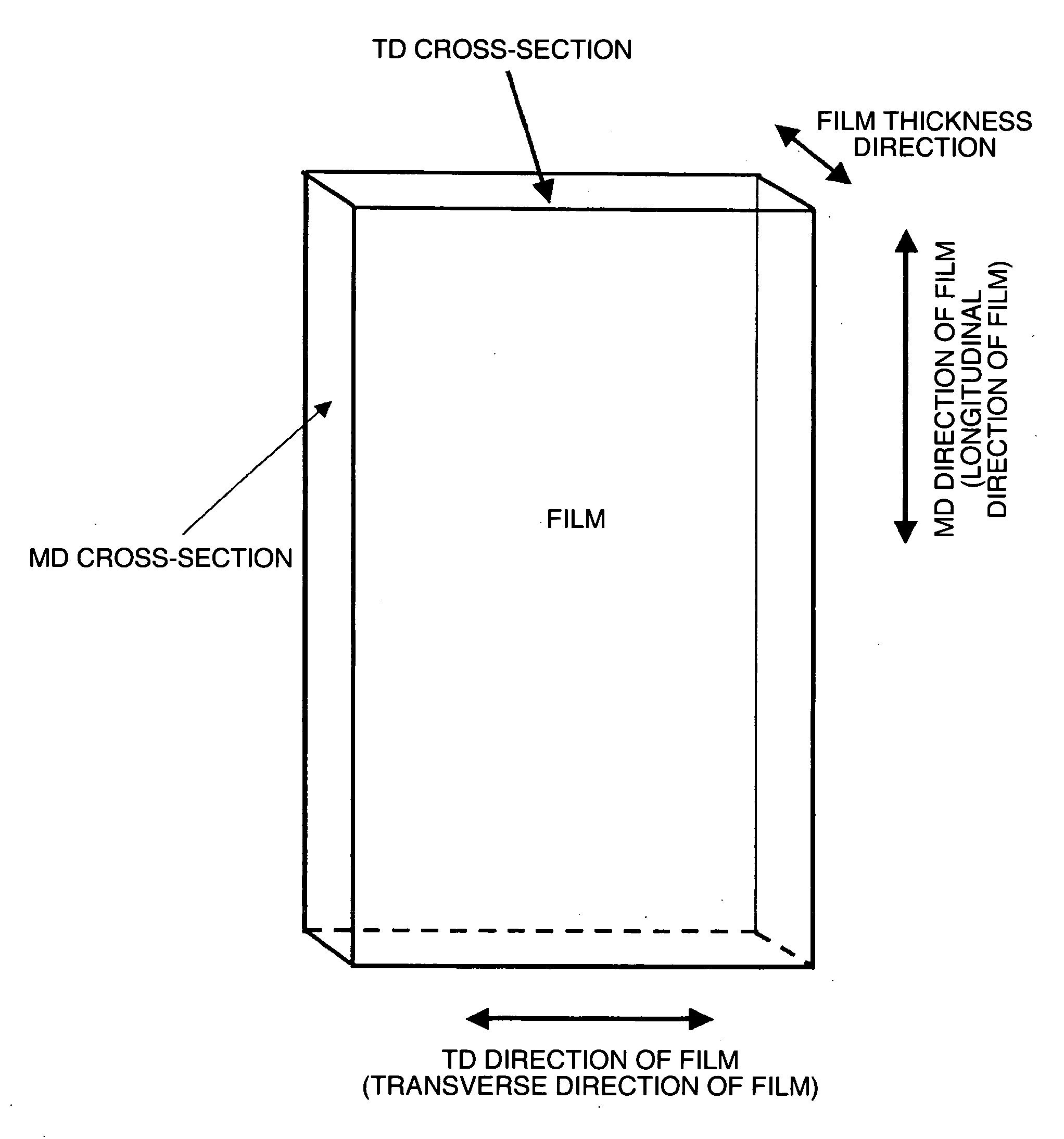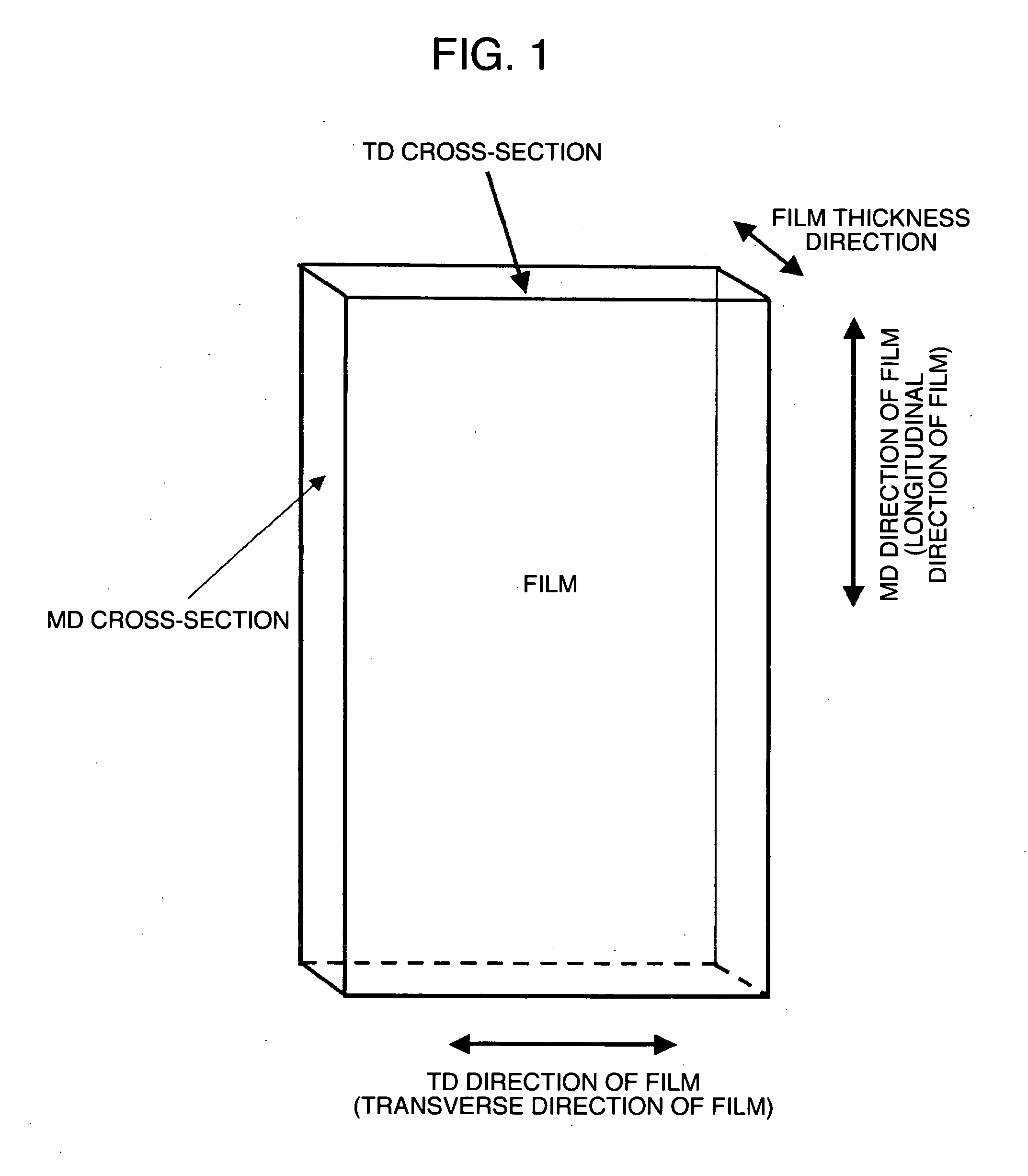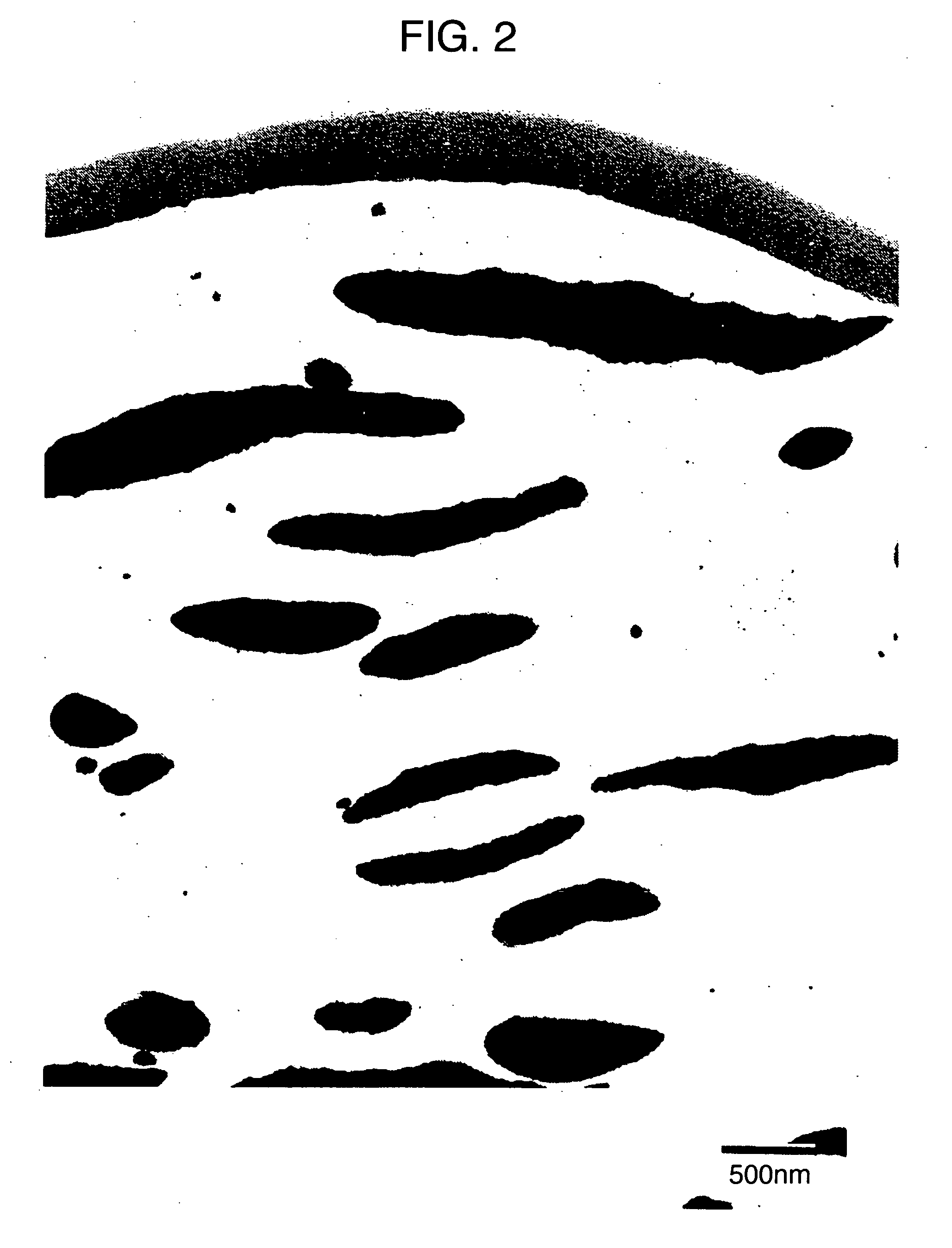Matte film
a technology of polylactic acid resin and matte film, which is applied in the direction of cellulose adhesives, paper coatings, packaging goods types, etc., can solve the problems of inability to improve the matte effect, inability to obtain biodegradable film or sheet, and inability to achieve polylactic acid resin. achieve the effect of adequate film-forming stability, adequate film-forming stability, and adequate film-forming stability
- Summary
- Abstract
- Description
- Claims
- Application Information
AI Technical Summary
Benefits of technology
Problems solved by technology
Method used
Image
Examples
examples a1
TO A39 AND COMPARATIVE EXAMPLES A1 TO A5
[0190] In Examples A1 to A39 and Comparative Examples A1 to A5, raw pellets were prepared by using crystalline polylactic acid (a1) and (a2), and amorphous polylactic acid (a3); esterified starches Cornpol CP-1, CP-3, CP-5 and CP-7 made by Nihon Cornstarch Corporation, Ltd. as a chemically modified starch (B); and ATBC, Rikemal PL-009 and PL-019 as a plasticizer (C), which are all described in Table 1: and by compounding them in such a way as will be described below. Specifically, the compound pellet of polylactic acid containing 25% of a chemically modified starch was prepared by the steps of: dry-blending 75 wt % of polylactic acid and 25 wt % of the chemically modified starch; and then melting and blending the mixture with the use of a co-rotating twin screw extruder. In the same way, a compound pellet of polylactic acid containing 50% of the chemically modified starch was prepared from 50 wt % of polylactic acid and 50 wt % of the chemical...
examples c10
TO C14 AND COMPARATIVE EXAMPLE C3
[0227] Multilayer films with predetermined thicknesses were formed by the steps of: employing compound pellets of polylactic acid obtained by being melt and blended with the use of a co-rotating twin screw extruder in the same method as in Examples C1 to C9 so as to form a composition shown in Table 17, for the first layer (outermost layer of tube film) of Examples C10 to C14; employing such a dry-blend of polylactic acid and BIONOLLE #3001 or Ecoflex, or each single material of BIONOLLE #3001 or Ecoflex as to form the composition shown in Table 17, for the second layer (intermediate layer) of Examples C10 to C14; employing Suntech LD F-1920 of low-density polyethylene which is a nonadhesive resin, for a resin in the second layer of Examples C10, C13 and C14, Ecoflex in Example C11, and the same compound pellet of a polylactic resin as the first layer in Example C12, for the third layer (innermost layer of tube film); and extruding them by using a th...
examples d1 to d9
AND COMPARATIVE EXAMPLES D1 TO D2
[0232] In Examples D1 to D9 and Comparative Examples D1 to D2, raw pellets were prepared by using crystalline polylactic acid (a1) and (a2), and amorphous polylactic acid (a3); calcium carbonate (Collocalso-EX), talc (Hi-filler #12) and silica (Sipernat FK310), as an inorganic filler (F); ATBC and Rikemal PL-019 as a plasticizer (C); and a silicon resin particle (KMP-590) as a particulate polymer (D), which are all shown in Table 19: and by compounding them in such a way as will be described below. Specifically, the compound pellet of polylactic acid was prepared by melting and blending the polylactic acid (A), the inorganic filler (F), the plasticizer (C) and the particulate polymer (D) so as to form a composition in a co-rotating twin screw extruder shown in Table 20.
[0233] Subsequently, films were formed by melting and extruding thus obtained compound pellets of polylactic acid through a circular single-layer die.
[0234] When the pellet was extru...
PUM
| Property | Measurement | Unit |
|---|---|---|
| Fraction | aaaaa | aaaaa |
| Fraction | aaaaa | aaaaa |
| Length | aaaaa | aaaaa |
Abstract
Description
Claims
Application Information
 Login to View More
Login to View More - R&D
- Intellectual Property
- Life Sciences
- Materials
- Tech Scout
- Unparalleled Data Quality
- Higher Quality Content
- 60% Fewer Hallucinations
Browse by: Latest US Patents, China's latest patents, Technical Efficacy Thesaurus, Application Domain, Technology Topic, Popular Technical Reports.
© 2025 PatSnap. All rights reserved.Legal|Privacy policy|Modern Slavery Act Transparency Statement|Sitemap|About US| Contact US: help@patsnap.com



